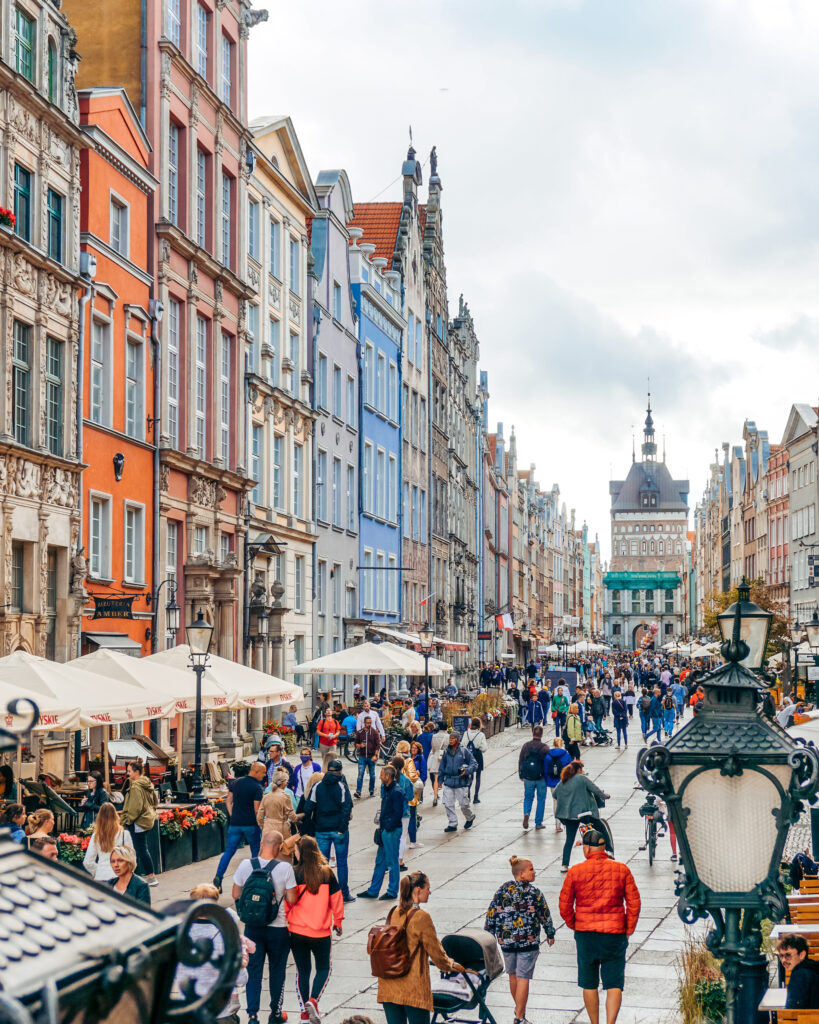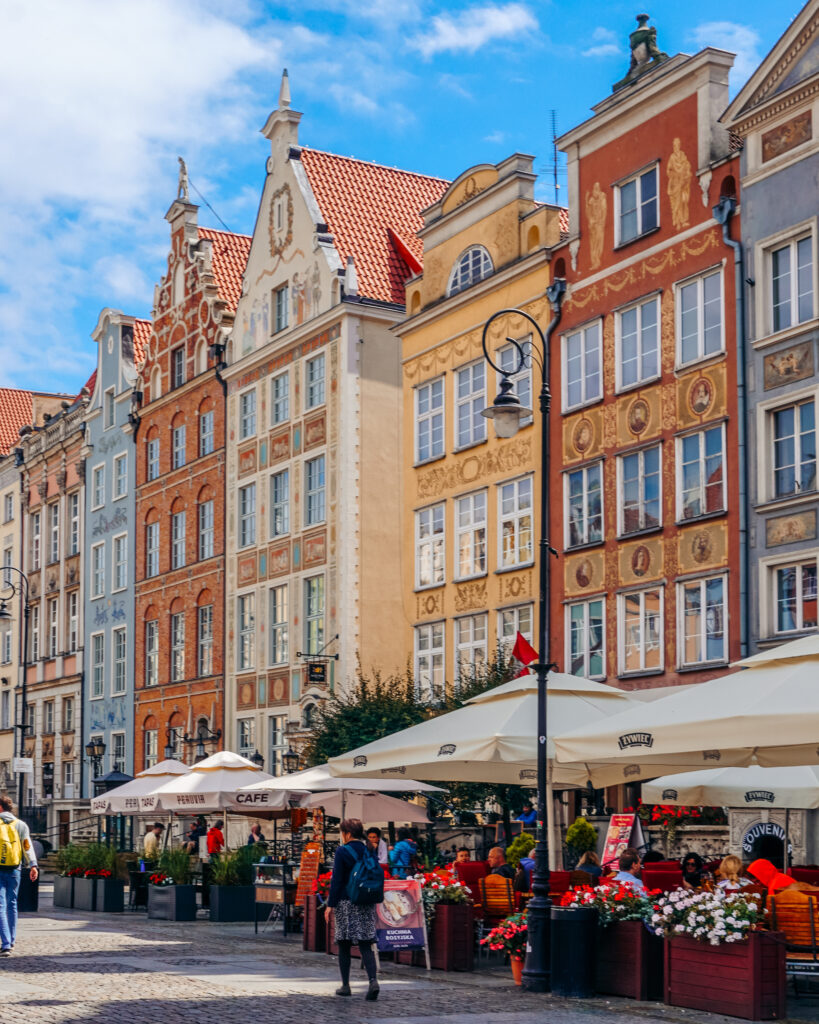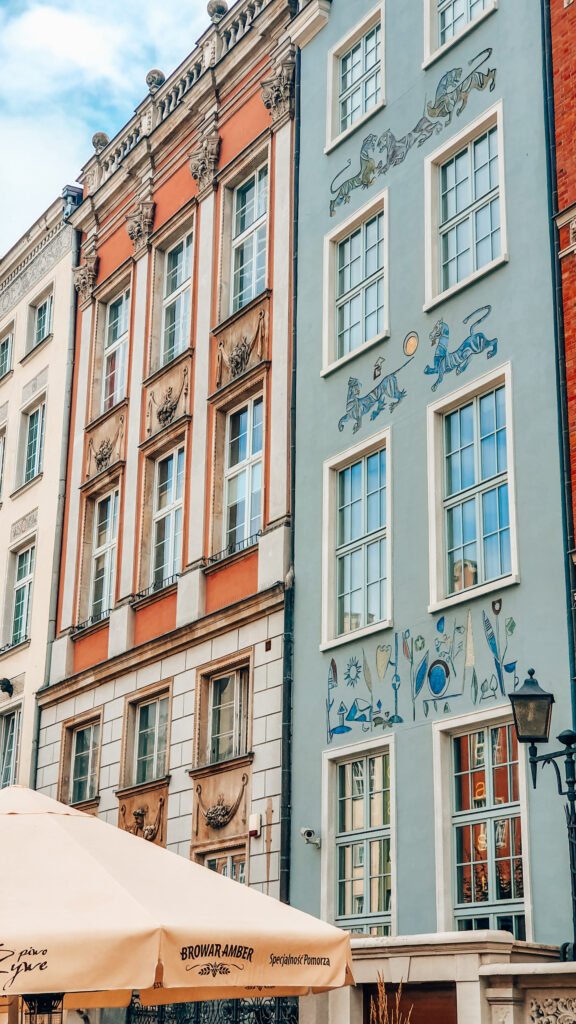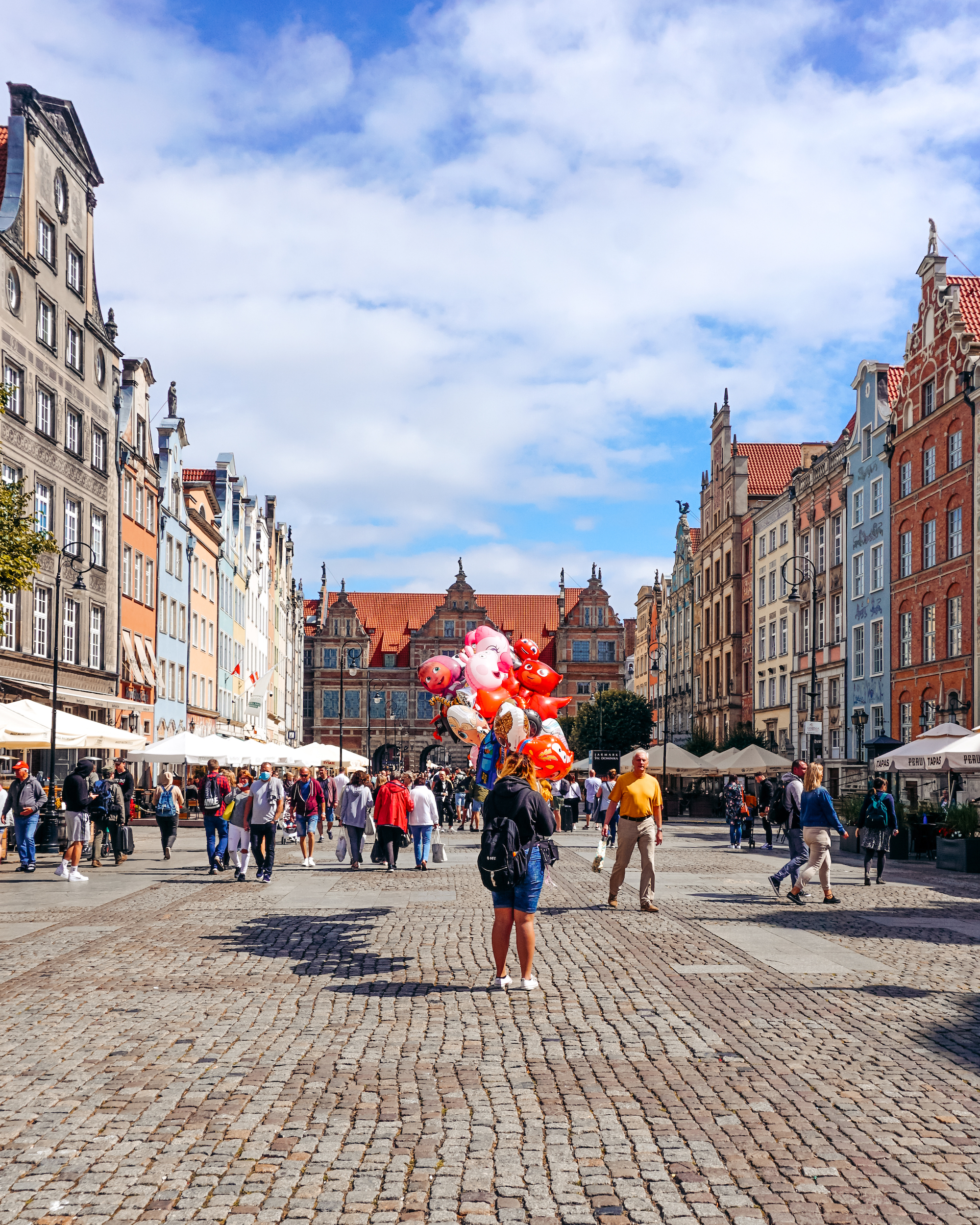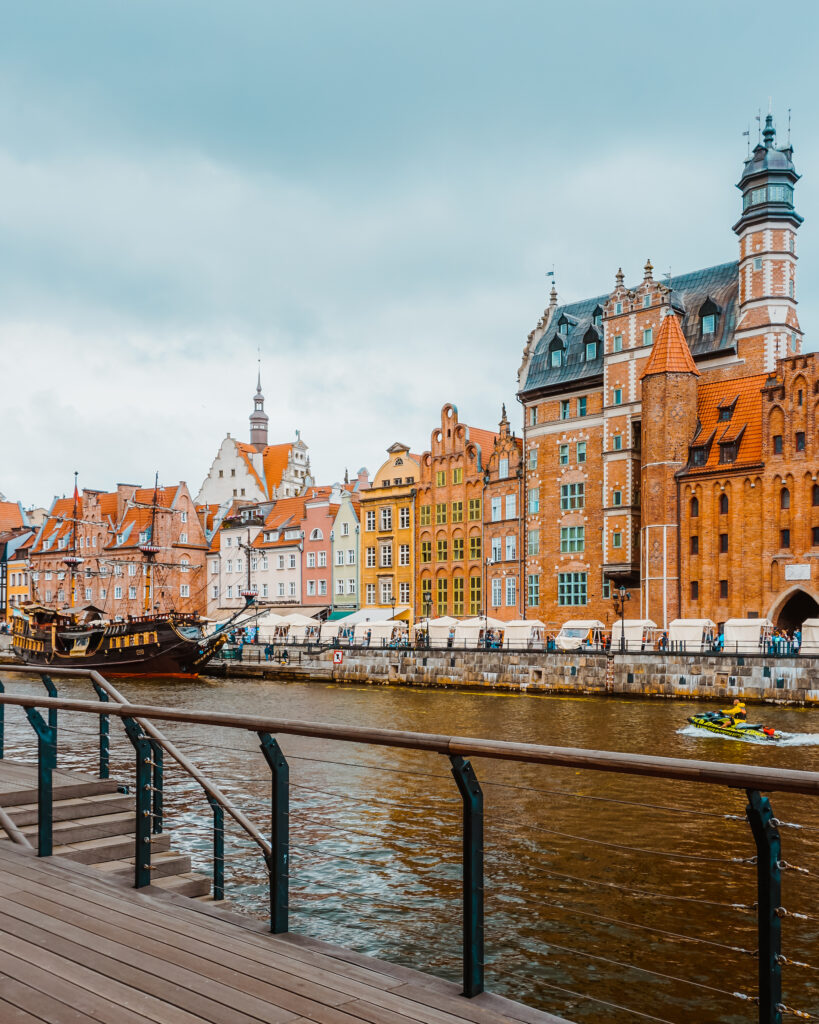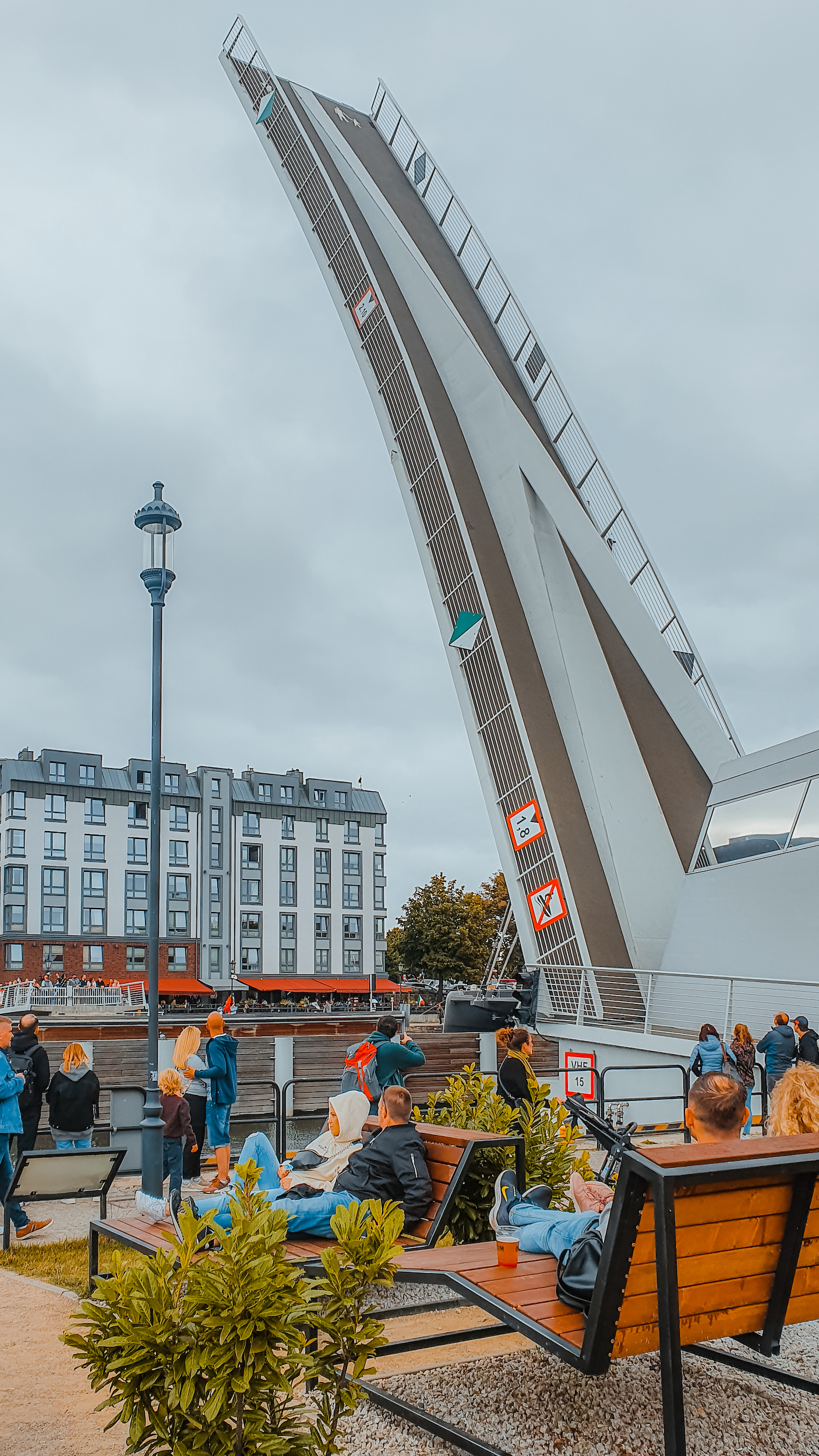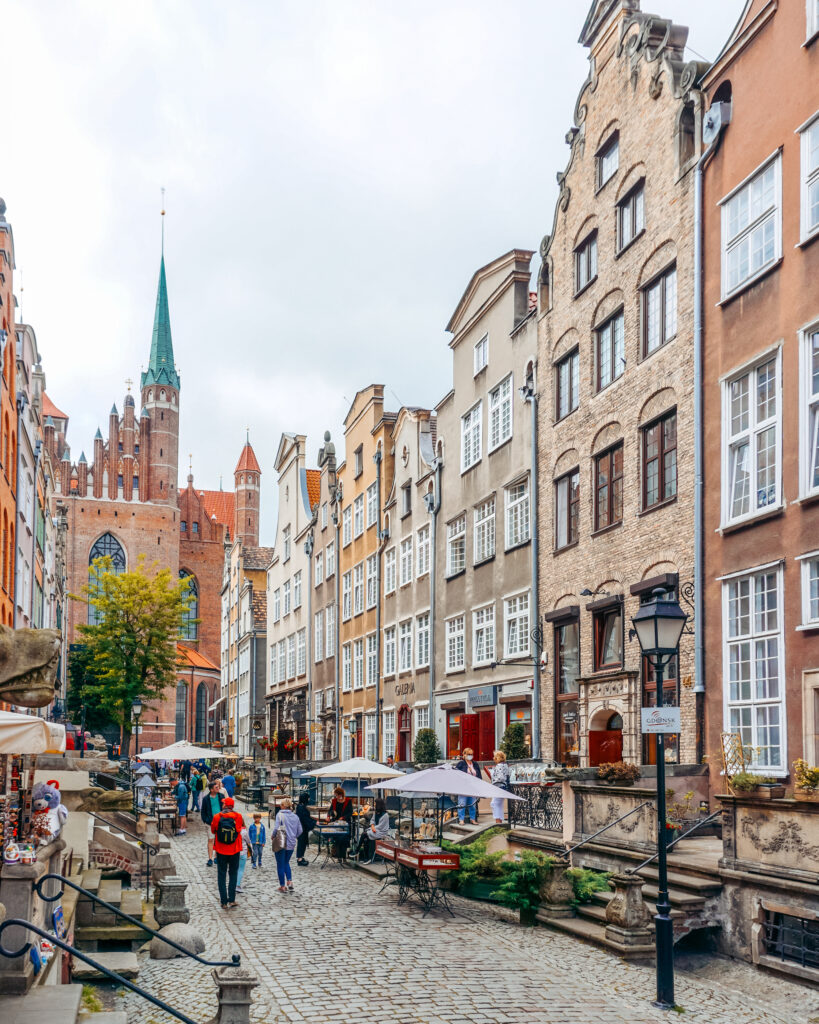Gdańsk – what to see and do if you only have a few hours
We all probably know by now that Gdańsk is well worth a visit. Thanks to its stunning architecture, fascinating history seen throughout the city and proximity to the seaside it’s been a well-known tourist destination for many years now.
It is always ideal to have a few days or even a week to spend there, but what if we only have a couple of hours to spare? Well, here are the most important things (in my opinion, of course) to see and do in Gdańsk if you only have 4 or 5 hours in your busy touristing schedule 👌
Download a PDF version HERE.
1. The Royal Way
It is essentially a long street and the main tourist route, leading through the centre of Old Town. It starts at the Wyżynna Brama (Upland Gate) in the south, through Ulica Długa (Long Street), Długi Targ (Long Market) and Zielona Brama (Green Gate) in the north.
This most interesting historic route in Gdańsk was the longest urban axis of the European Middle Ages. It was a place of parades, important ceremonies and triumphal entries of Polish kings to the city.
The walk itself might take you around 10 minutes, but you will probably enjoy it way longer, as you may find yourself stopping and admiring the views quite often!
Here are the sights worth looking out for:
Golden Gate
The first building you start your walk with would be Złota Brama (Golden Gate). It’s a very beautifully decorated city gate, a masterpiece of Gdańsk’s golden age. The colourful coat of arms of Gdańsk greets the main passage on both sides of the gate. On the top, you can admire stone sculptures symbolising Peace, Freedom, Wealth and Fame.
Long Street
You fully begin the walk when you enter Ulica Długa (Long Street), the representative street of the Main Town. It was inhabited by the most influential and wealthiest families of Gdańsk patricians: bankers, mayors, councillors, ship owners and merchants. It was a showcase and a symbol of the wealth of old Gdańsk. To this day, its main attractions are houses with richly adorned façades, some of which are truly showstopping!
Uphagen’s House
One of the houses worth mentioning is Dom Uphagena (Uphagen’s House). This Rococo-Classicist tenement house was built for the city councillor Jan Uphagen. According to the owner’s will, its period décor was preserved until 1945. Currently, it houses one of the most beautiful museums in Gdańsk – the Museum of Townhouse Interiors. (Entry costs 25 PLN or 18 PLN concession).
* Prices correct as of August 2024
Main Town Hall
This monumental building located at the intersection of Long Street and Long Market is the former seat of Gdańsk authorities. Its origins date back to the early Middle Ages and it served many Polish kings. Today it houses the Historical Museum of the City of Gdańsk. (Tickets to enter cost 25 PLN or 28 PLN concession).
* Prices correct as of August 2024
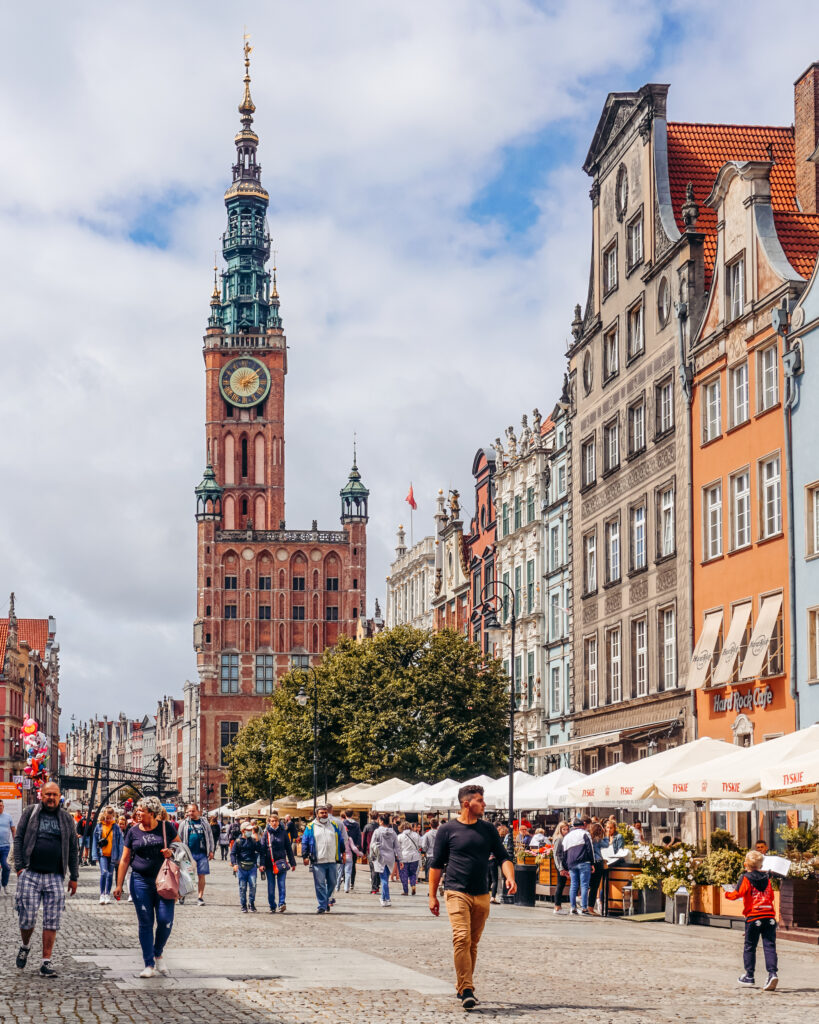
During the tourist season, you can enter the viewing gallery on the tower, which offers a wonderful view of Gdańsk. (More about it in Number 5!)
Long Market
Długi Targ (Long Market) is the favourite meeting place for both tourists and locals. It has been always the centre of city life – this is where the town hall has been, Polish kings had their quarters, and the richest inhabitants had their houses. Also, it was here where numerous parades, fairs and executions took place.
It has also been an inspiration to local artists, painters and photographers. Every corner here is glorious!
There are a few things located just around here. Like Neptune’s Fountain – a bronze statue of the Roman god of the sea located in the centre of the Long Market. It is Poland’s oldest secular monument (that is: not connected with religious or spiritual matters).
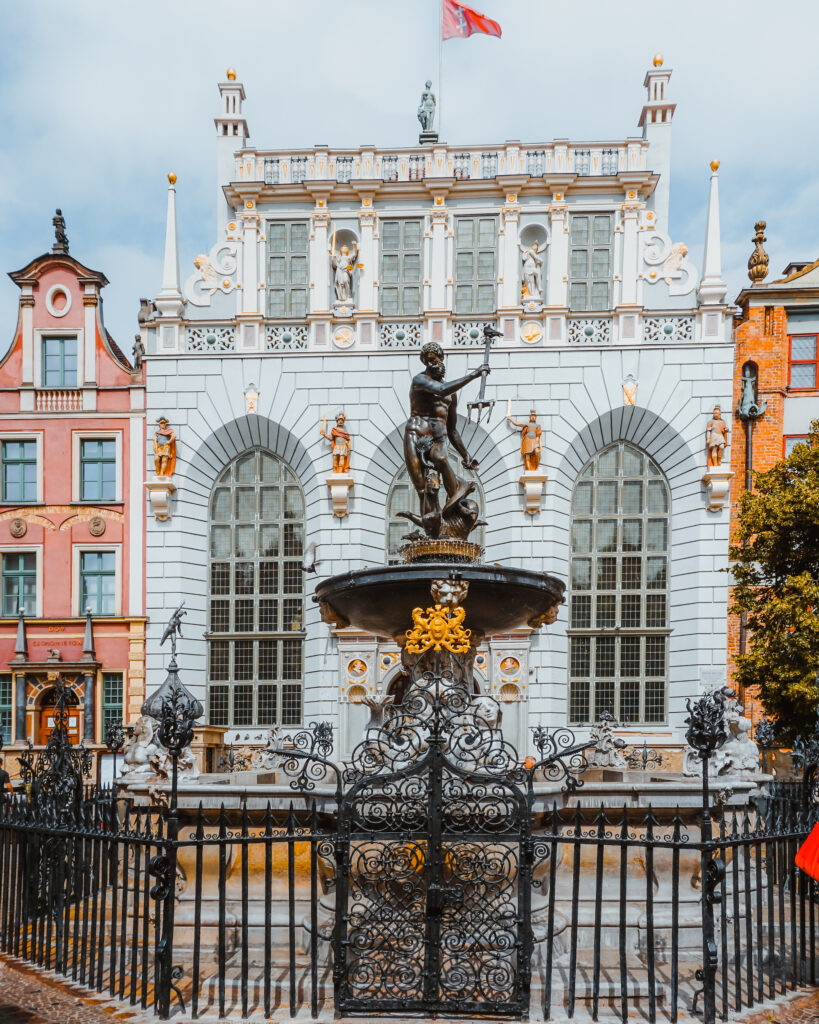
Just behind the fountain is the Dwór Artusa (Artus Court). It’s a former meeting place of wealthy patricians and an important centre of social and commercial life, modelled on the legendary Round Table of Knights of King Arthur!
When you’re on the square, look around. How stunning are these facades? Everywhere you look, you can admire gorgeous details and great craftsmanship. One of the houses you should pay attention to is the Złota Kamienica (Golden House) This is one of the most beautiful buildings in Gdańsk, built in the Renaissance style.
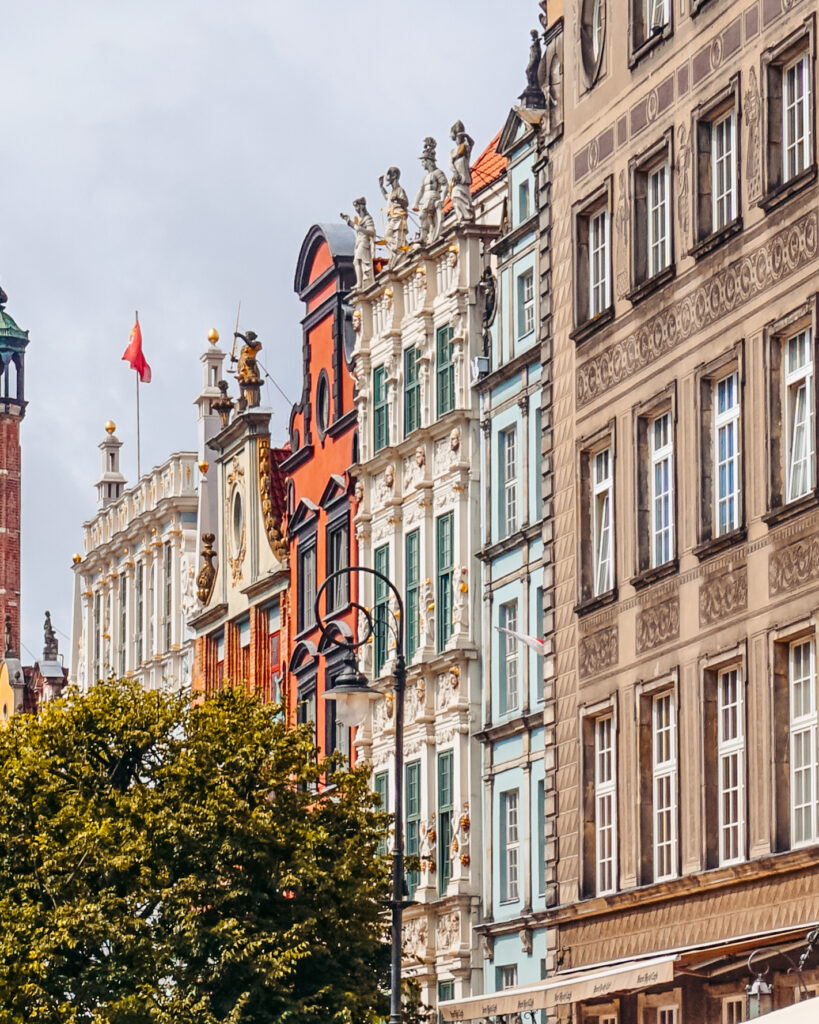
The facade, richly decorated with sculptures, formerly richly gilded (hence its name), presents the heads of rulers and leaders, battle scenes and coats of arms of the founders.
Green Gate
At the southernmost point, you can find the Zielona Brama (Green Gate). It leads you out to the Motława River Embankment. This building was back in the days the official residence of Polish kings, but actually, only one royal stayed here over the years. Above the four passages, there are coats of arms of Gdańsk, Poland, Royal Prussia and the eagle of the Prussian kings.
2. Walk along the Long Embankment
Długie Pobrzeże, or Long Embankment, is a favourite place for walks amongst Gdańsk residents as well as tourists. Years ago, only a bunch of unloading piers were located in front of the water gates. Over time, the piers were connected, creating a boulevard. After the Second World War, during the reconstruction of the city, the embankment was widened and paved.
From here, tourists can go on cruises around the Gdańsk port, to Westerplatte, Sopot and even Hel. If you’re interested, please see the official cruise company website Żegluga Gdańska for more information.
The best way to enjoy the sights around the Motława River is simply walking around the embankment! It is impossible to fast-walk here – there are many tempting amber stalls catching the eye, and the tour boats, pirate ships and party boats sailing on the Motława River attract lots of attention. In addition, you can find many cafes, food stalls and stylish restaurants lining up the boardwalk, and people selling souvenirs and balloons. It’s all so lively!
There are a few places I would recommend seeing, that’s why I have created a walking map! It is actually the exact walk I did when I visited Gdańsk. I found it the most useful when it comes to visiting all the points of interest around. The map is a regular Google Maps one, so you can click on it, zoom in and out, click on the individually tagged places, or save and print it out for yourself 😊
Check out the map here:
The description is available on Google Maps, but here’s a short summary of the walk and places I tagged:
Continuing the walk from the Long Market through the Green Gate, go straight onto the Green Bridge. The view from here is iconic – you can spot the famous Żuraw Gate and Black Pearl Galeon. Then walk around the Wyspa Spichrzów (Granary Island), cross Stągiewny Bridge and keep walking along the Gdańsk Marina.
You will cross another small bridge and find yourself on Ołowianka Island. Keep walking to your left towards the water, there’s a small pavement there (Google Maps don’t show it though). On your left, there’s a grand tall ship “Generał Zaruski” and a ship museum “Sołdek”.
Further down you will find the “AmberSky” Ferris Wheel, you can get quite a nice view of Gdańsk from up there (although it’s a bit pricey, as it costs 35 PLN for a 10-15 min ride…). On the way there you will pass by the “GDAŃSK” inscription neon, nice for a souvenir photo 😉
And the area around here is so inviting too! You have places to sit, benches, food stalls and beer stands to enjoy and pass the time. And you might have to spend some time here because to cross the river back to the other side you need to use the draw footbridge.
It is open every hour on the hour for only 30 minutes! So if the bridge is down, just sit down, relax and enjoy the views 😃
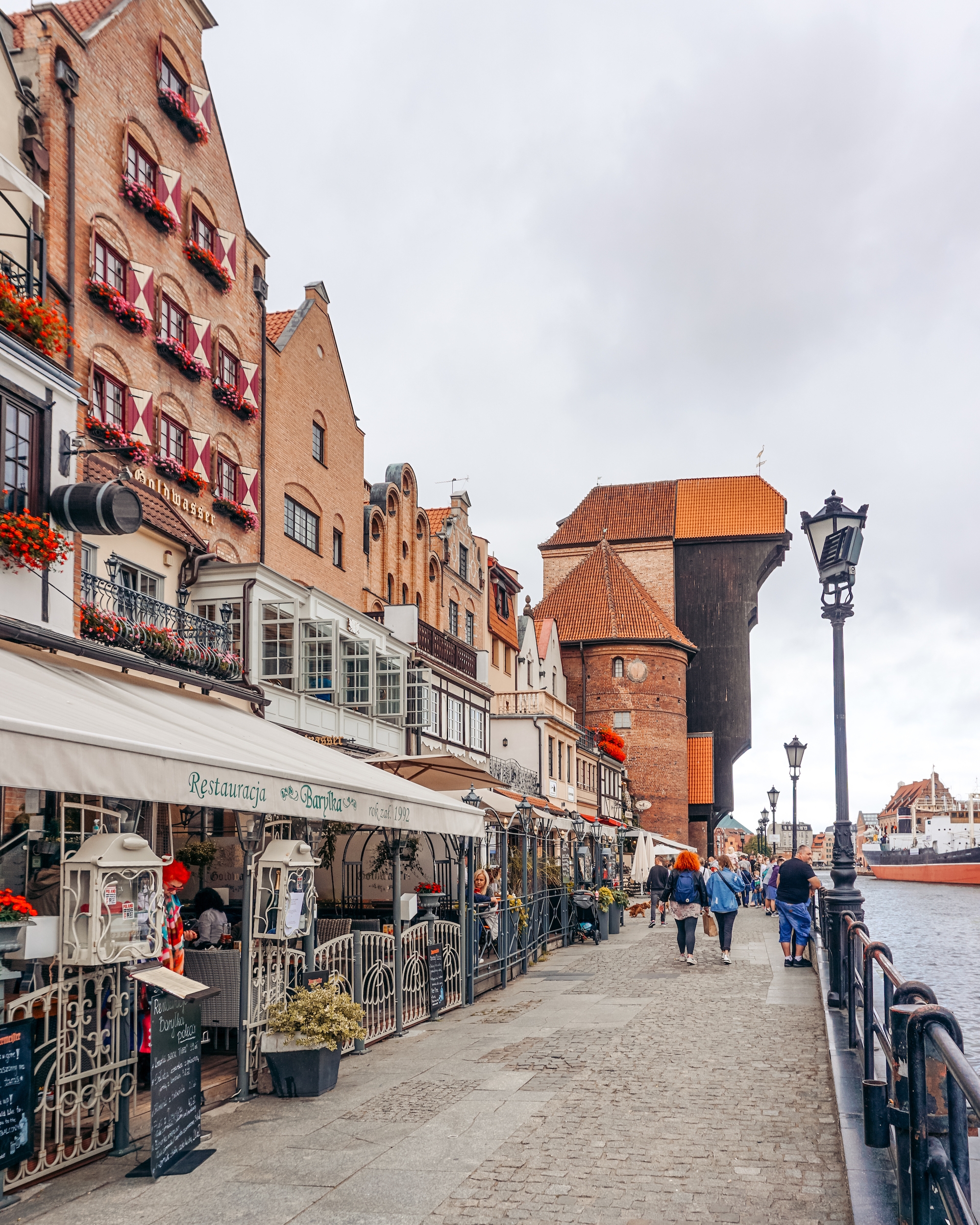
Once you cross the bridge keep walking to your left. You will pass a few gates (Straganiarska, Żuraw – the most famous one, and Chlebnicka). The last one will be the Green Gate, marking the end of the Long Embankment walk!
3. Mariacka Street
Mariacka Street is undoubtedly the most delightful street in Gdańsk, perfectly reflecting the unique atmosphere and character of Gdańsk’s old buildings. It runs from St. Mary’s Basilica to the Motława River. It was badly damaged during WWII and was pieced back together with salvaged debris from the neighbourhood.
On the ground floors of tenement houses, you will find many cafes, shops, and most importantly, amber salons.
You can also stop for a coffee at Cafe Drukarnia or Café Kamienica, or even have a drink at the Literacka Wine Bar.
4. Buy amber jewellery
You can’t talk about Gdańsk and not mention amber. Gdańsk is the amber capital of the Baltic states and you will see many stalls selling it all over the Tricity area.
For centuries, amber has aroused admiration and interest. Due to its beauty, pleasant smell and workability, it has always been used as a decorative stone.
Once valued amulets were made of it, today it is also used in the cosmetics industry and home remedies.
For many years, the greatest interest has been aroused by inclusions – the insects and fragments of vegetation, actual traces of life from millions of years ago, embedded in resin and preserved forever.
The most knowledgeable and prestigious amber dealers have their shops on Mariacka Street. Those worth visiting are Galeria Wydra, Salonik Pod Skrzydlatym Aniołem, Galeria Venus and Amberstyl (among many!).
You can also visit the Museum of Amber (ul. Targ Węglowy 26), where you can learn how amber is made, how it is obtained, and learn about its properties and processing throughout history. Normal ticket costs 35 PLN, concession 25 PLN.
* Prices correct as of August 2024
Visiting hours:
Low / Winter Season (1. October – 30. April)
Monday: closed
Tuesday: 10 am – 1 pm – free admission day
Wednesday – Saturday: 10 am – 4 pm
Sunday: 11 am – 4 pm
High / Summer Season (1. May – 30. September)
Monday: 10 am – 1 pm – free admission day
Tuesday: 10 am – 6 pm
Wednesday – Saturday: 10 am – 4 pm
Sunday: 11 am – 4 pm
5. See the city from above
There’s no better way of seeing the whole cityscape than from above! And in Gdańsk Old Town there are a few viewpoints you can choose from. On a short visit, you might be able to visit only one (as I did), but I think it’s a must-do!
St. Mary’s Church Tower
St. Mary’s Church (or Basilica) is the tallest brick temple in the world. Its bell tower is 80 metres high and the viewing terrace is right on top of it. The location in the heart of the city guarantees stunning views – of the Town Hall, the Royal Way, lovely houses and other iconic attractions of Gdańsk. On a clear day, you can also see Gdańsk Bay, Gdynia, Sopot and Hel.


To get to the tower you need to climb 412 stairs and unfortunately, it is not possible to use the lift. Mind that the rooftop terrace is quite small, so it fills up with people quite quickly! You can visit the tower every day from 10 am to 7 pm (last admission at 6:30 pm). The adult ticket costs 18 PLN, concession 10 PLN.
* Prices correct as of August 2024
Main Town Hall
The City Hall is the second tallest building in Gdańsk – it is 52 metres high. From its tower, you can get an impressive view of the historic part of the city, especially the Royal Route. Entry to the tower costs 18 PLN, 12 PLN concession.
* Prices correct as of August 2024
Opening hours:
Low / Winter Season (30. September – 26. April)
Monday: closed
Tuesday: 10 am – 1 pm – free admission day
Thursday: 10 am – 6 pm
Wednesday, Friday, Saturday: 10 am – 4 pm
High / Summer Season (27. April – 29. September)
Monday: 10 am – 1 pm – free admission day
Other days of the week: 10 am – 6 pm
St. Catherine’s Church Bell Tower
285 stairs lead to the viewing gallery, where from a height of 50 meters you can admire the splendid panorama of the Old Town and the Main Town. The tower also includes a carillon, an instrument consisting of several dozen bells and equipped with a manual keyboard. Tickets cost 16 PLN adult or 8 PLN concession.
6. St. Dominic’s Fair (summer only)
It is one of the biggest trade and cultural open-air events in Europe. The strength of the fair is its unique atmosphere and stalls full of various goods. You can find old, rare and amazing items, there is no shortage of artistic handicrafts and delicacies from all over the world. The fair takes place in the heart of the Old Town and lasts about a month (usually July/August). This year (2024), the fair had more than 760 stalls trading!
The history of the fair goes back to the year 1260, so it means 760 years of successful tradition! St. Dominic’s was held annually for many centuries, becoming an important holiday for the city. This tradition was interrupted by World War II and returned in 1972. Also then the rooster became the symbol of the fair.
Today, the official opening of the Fair is announced by a specially written bugle call, to which another note is added each year. And so the bugle call “grows old” together with the Fair. This year it will have 760 notes. In such a historical setting, the President of the City hands over to the buyers the key to the gates of Gdańsk. If you would like to learn more and find out the exact dates of the fair, please head to the St. Dominic’s Fair official website.
7. European Solidarity Centre
If you have a bit more time left to spare, you should add this place to your itinerary. I, unfortunately, haven’t been there myself, because I run out of time to venture out of the Old Town area. But this spot is iconic enough to recommend it.
The European Solidarity Centre (ECS) is a museum popularising knowledge about the Solidarity movement and anti-communist opposition and the fall of communism in Poland and Europe, but also an educational centre, research and scientific centre, archives, library and media library.
The European Solidarity Center was established as a place of great importance to the history of both Poland and Europe. It is here, in the former Shipyard in Gdańsk, where the beginning of the events that eventually brought down the Berlin Wall started and restored freedom throughout Eastern and Central Europe. The nearby Monument to the Fallen Shipyard Workers commemorates the bloody events of December 1970, when the authorities opened fire on the shipyard workers.
The heart of the ECS is the permanent exhibition dedicated to the history of Solidarity and opposition movements that led to democratic changes throughout Central and Eastern Europe.
The Centre is located a 20-minute walk from the Old Town, it’s easily reachable by public transport (9 minutes by tram / 10 minutes by bus from Brama Wyżynna stop) or a 5-minute car drive.
The adult ticket costs 35 PLN (concession 30 PLN), and the price includes an audio guide.
Opening hours:
Low Season (October – April)
Main Building: open 7 days a week from 10 am to 6 pm
Permanent Exhibition: Monday, Wednesday & Friday 10 am – 5 pm
Tuesday closed
Saturday & Sunday 10 am – 6pm
High Season (May – September)
Main Building: open 7 days a week 10 am – 8 pm
Permanent Exhibition: Monday – Friday 10 am – 7 pm
Saturday & Sunday 10 am – 8 pm
You can visit the ESC official website for more information.
I hope this short guide invites you to visit Gdańsk! You can easily spend a few hours here, simply wandering around the city, admiring the beautiful sights. So if you can’t stay in Gdańsk for more than 1 day – this list should provide you with just enough things to see and do 😉
If you have any questions, please let me know!
Love,
Jo xx

